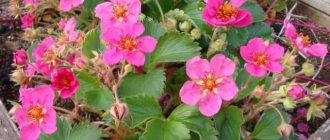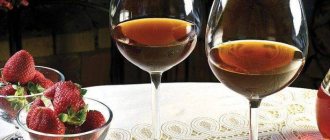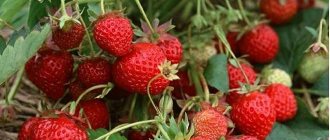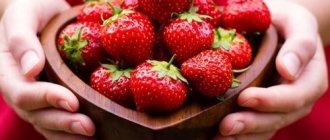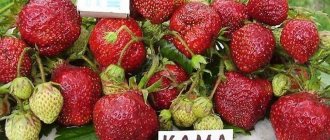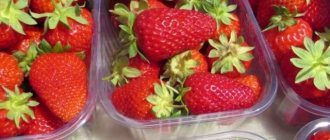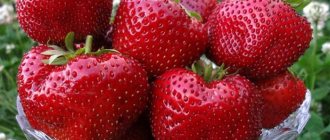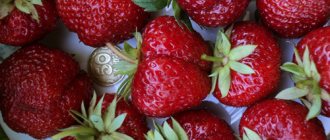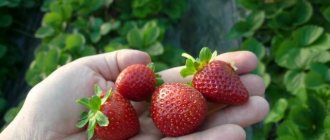It's hard to find a person who doesn't like fragrant strawberries. Almost all gardeners, even with small summer cottages, allocate a piece of land for planting garden strawberries. This means that you need to choose a variety so that several planted bushes will allow you to get a good harvest of berries.
Among the cultivated varieties of strawberries with good yields is the Elsanta strawberry. The attractiveness of garden strawberries is that they can be grown in an apartment, receiving a harvest all year round. Even the New Year's table can be decorated with fragrant berries grown on the windowsill. The features and rules for growing Elsanta strawberries will be discussed further.
Description of the variety
It’s hard to imagine Elsanta strawberries without a description of the variety, photos and reviews from gardeners. As the popularity of the variety grows, you need to know what it is:
- The bushes are powerful, with medium foliage, erect. The leaves with noticeable fluff are large, lush green, and shiny. They are slightly concave inward. Leaves are highly wrinkled.
- Elsanta strawberries can be recognized by their thick, tall flower stalks located flush with the foliage. The inflorescence produces many white flowers with a bright yellow center. Flowers of different sizes.
- The Elsanta strawberry variety has large berries up to 50 grams. They are red and shiny. They have a cone shape, a medium-sized cup. The inner part is sweet, with a slight sourness (sugar -7.3%, acid - 0.77%).
- Inside the berries are without voids, dense, crispy. It's the crunch that some people don't like.
- There are a lot of seeds on the berry, they are yellow and clearly visible on the fruit.
- In the Elsanta variety, the stalk comes off easily without damaging the berry.
- In addition to the large number of peduncles, the variety is distinguished by its ability to produce a large number of mustaches. Elsanta strawberries have virtually no downsides.
- Elsanta strawberries are resistant to many diseases characteristic of this crop, but can suffer from root rot and powdery mildew.
- The culture is responsive to heat and sufficient moisture. Dry hot weather and insufficient watering lead to a decrease in the size of the berries, which negatively affects the yield.
- Can be grown in open ground, but the best results are in greenhouses or greenhouses.
- The variety is not frost-resistant, so it requires shelter for the winter.
- It is zoned in many regions of central Russia, Ukraine, and Belarus.
The only drawback of the variety is that the bushes need to be replaced after three years.
In the video, the gardener shares his impressions of Elsanta strawberries:
Protection from diseases and pests
The weak point of the strawberry plant is the root system. It is affected by rot and fungal pathologies. The above-ground part of the bush is less susceptible to diseases.
To prevent the appearance of many diseases and pests in the process of growing berries, you should follow some simple rules:
- berry plantings should not be too dense;
- the soil should not be over-moistened;
- the beds are regularly weeded and mulched;
- plant residues from the beds must be removed immediately;
- diseased plants need to be destroyed;
- Once every three years, the beds on which the berries grow are moved.
Preventive measures against most strawberry diseases are treatments with nitrafen solution, Bordeaux mixture, fungicides and insecticides. Disinfection of the soil before planting plays an important role. It is carried out with a solution of iron sulfate.
Bushes affected by diseases are dug up and destroyed.
Productive properties
Many gardeners are interested in the question of the remontability of the Elsanta variety. Let us immediately note that it does not belong to the remontant category, although this does not make its attractiveness any less:
- The variety is high-yielding; if you follow the rules of agricultural technology, you can collect up to one and a half kilograms of juicy aromatic products from one bush, and up to 7000 kg from one hectare. This is why Elsinore strawberries (as they are sometimes called) are grown on an industrial scale.
- Dutch strawberries can be stored in a room for more than 3 days, and in the refrigerator for up to 5 days, without losing their quality.
- The presentation of the berries is not lost during long-term transportation, as gardeners write in reviews.
- Elsanta strawberries are suitable for fresh consumption, making compotes, jams, preserves, and for freezing. After thawing, it does not lose its shape.
Attention! If you plant seedlings in flower pots on the windowsill, you can get a harvest all year round.
Diseases, pests and their control
Elsanta is very resistant to viral diseases, verticillium wilt and mites. Powdery mildew and bacterial spotting are affected in the same way as most popular varieties. The most sensitive part is the roots; they can rot and be subject to fungal attacks. Most often, it is impractical to treat such lesions; the bushes are completely removed.
Prevention of root diseases:
Before planting seedlings, the roots are disinfected; avoid waterlogging of the soil; control over the application of fertilizers - it is important not to provoke the proliferation of parasites. Table 2 shows common diseases and pests that can cause serious harm to Estelle strawberry plantings
Table 2 shows common diseases and pests that can cause serious harm to Estelle strawberry plantings.
| Pests and diseases | Symptoms | What to do? |
| Powdery mildew | The leaves curl into tubes and turn purple, with a white coating appearing on them. The fruits become deformed and their taste deteriorates. | The beds are treated with a solution of copper sulfate. Spray the plantings with iodine solution. |
| Late blight | The leaves and petioles turn brown, the edges of the leaves bend upward. There are few berries, and when the roots die, the plant dies. | The disease has no cure. Bushes are pulled out and destroyed. The control is only preventive - buying seedlings from trusted nurseries, disinfecting the roots before planting, treating them with a growth stimulant. Treating the soil with iodine solution. |
Medvedka Damages the roots, as a result of which the bushes die. Setting up traps in beds. Mole crickets come out of their holes into the soapy solution. Planting near the beds of calendula and marigolds. Slugs Appear at high humidity and eat berries and young leaves. Cover the beds with agrofibre, mulch with sawdust, sprinkle with wood ash, and spray with a saturated solution of table salt.
Prevention of diseases and pests:
- destruction of dry, diseased strawberry foliage;
- digging up and destroying diseased bushes;
- moving plantings after 3-4 years of cultivation;
- weeding and mulching;
- autumn tillage of the soil with Bordeaux mixture or copper emulsion.
Most strawberry diseases and pests can be dealt with using herbal infusions and decoctions and other available means. Chemicals are resorted to as a last resort - when the problem has started.
Features of agricultural technology
Landing
When planting Elsanta seedlings, you need to take into account the possibility of strawberry growth. It can be planted in two stripes with a distance between bushes of at least 25 cm, and row spacing up to 40-45 cm.
As a rule, experienced gardeners plant the variety in a new location in September. Judging by the reviews, larger berries ripen on fall-planted strawberries. The soil is well watered and the holes are prepared. The seedlings are crimped after planting. If this is not done, the roots may end up on the surface.
Advice! When planting Elsinore garden strawberries in a new place, the soil is not fertilized in order to preserve the characteristics of the variety.
This is not a simple statement. After all, gardeners have been breeding this variety for decades. According to their reviews, overfed strawberries become less viable. While bushes planted without feeding tolerate heat well. It is better to feed three-year-old plants. They will be working for the last year, and they need replenishment.
Important! Plants harden themselves and develop endurance.
The photo shows strawberries blooming in spring. You can imagine how many berries there will be.
Features of watering
Since Elsinore strawberries are varieties with low drought resistance, they require watering. After planting, the seedlings need to be watered every evening for 30 days. Then once a week. During fruiting, the soil should not be allowed to dry out. When it’s hot, the amount of water per square meter increases to 10 liters. Garden strawberries respond well to drip irrigation.
Warning! To prevent the large-fruited Elsanta from burning under the scorching sun, it is necessary to install a shelter over the garden bed.
All other agricultural techniques, according to gardeners with extensive experience in growing strawberries, are no different: loosening, weeding, pest control, disease prevention.
In general, Elsanta strawberries have positive reviews from gardeners. You need to have such plants on your site at least for variety.
Wintering
Elsanta strawberries will not be able to overwinter without shelter even in the southern regions of Russia. Arcs are pulled over the bed, a layer of straw or peat is poured, and dense non-woven material is placed on top.
Attention! In areas with a harsh climate, the Elsanta variety will have to be thoroughly covered.
Garden strawberry bushes need to be watered right up to the shelter. In winter, the bushes should be pruned and well mulched. Although the attitude towards pruning leaves is ambiguous, according to many gardeners, this procedure is necessary to increase the yield of Elsinore strawberries next year. You only need to trim the leaves, leaving the petioles so as not to damage the growing point. The photo shows how to do it correctly.
Cover the plants only with the onset of frost so that the strawberries have enough time to harden.
Harvesting and winter care
They begin to pick the berries when they turn red. There is no need to delay harvesting, since it is difficult for the bushes to hold the fruits, and the plant may not have enough strength to ripen the rest of the crop. The strawberries come off the bush well and the stalk remains on it. After picking, the berries are sorted and washed, then they can be tasted. Strawberries are stored only in the refrigerator. In this case, there is no need to wash the berries, otherwise the fruits will become moldy.
When it starts to get colder outside, the strawberries are prepared for the upcoming winter. Remove dry leaves, old shoots and dried branches from plants. A layer of straw at least 5-6 centimeters high is laid on dry ground. Fiber or film is placed on the straw. The material must be secured with a weight to prevent it from being blown away by the wind. There is no need to throw snow on the agrofibre; the strawberries will last just fine until spring.
Reviews about Elsante
★★★★★
Nadezhda L., Petrozavodsk. A variety for the laziest.
A very unpretentious strawberry. It is easy to propagate; seedlings from tendrils and cuttings take root without problems. There is always a good harvest of berries - the main thing is to renew the plantings on time. The berries are good fresh, in compotes and jams. But we freeze the lion's share - the berries retain the real strawberry flavor. ★★★★★
Evgeny D., Novosibirsk. Elsanta is my favorite variety.
I’ve been growing it for a long time, and I’ve come to some conclusions. The main thing is not to plant bushes densely so that the yield does not fall. And in order not to spray the plantings, I save them from pests with flowers, onions and garlic - I plant them in the spaces between the rows. Hide
Add your review
The uniqueness of the Dutch variety Elsanta lies in its undemanding nature. This strawberry grows in any soil and in any climate, and requires almost no fertilizer. By planting Elsanta, you will receive a bountiful harvest of berries with a standard taste, spending a minimum of effort and money.
0
3
Copy link
Planting methods
It is always better to buy varietal strawberries in nurseries; firstly, there is no risk of buying a fake. Secondly, the seedlings are grown in peat pots: when transplanted into a garden bed, there is no need to remove them from the container, risking damaging the roots.
Seedlings grown independently must be hardened off before transplanting to unprotected soil. In addition, to prevent diseases, soak the roots in a solution of slightly pink potassium permanganate for 10–15 minutes.
Important! Experienced farmers recommend planting Elsanta in September, as it shows the best yield.
The dug up and leveled bed is moistened a day before the seedling planting procedure. The beds are formed in strips with row spacing of 45 cm. The holes are dug at a distance of 25 cm from each other; fertilizers are not applied when planting this variety. According to reviews from gardeners, if you overfeed the plant at the very beginning, it will become sickly and unfruitful.
When planting, the bush is deepened so that the root collar remains 1 cm above the surface. By sprinkling the straightened roots with soil, the soil is compacted so that air pockets do not form. After planting, water and cover with mulch.
Diseases and pests
Any variety of strawberry - garden or ampelous - is subject to attacks by the same pests, microbes, viruses, and fungi. Thanks to growing at altitude, ampel strawberries get sick less often. Table 2 shows common diseases and pests of hanging varieties, and measures to combat them.
table 2
| Pests/diseases | Harm/symptoms | How to fight? |
| Powdery mildew | The edges of the leaves curl, the berries become covered with an ashy coating. | Cleaning up dried and damaged leaves. In the spring, they are sprayed with Bordeaux mixture 3, and after harvesting, the plantings are treated with a 1% solution. For prevention, plantings are sprayed in the spring with a solution of sulfaride (per 10 liters - 2 tablespoons). |
| Strawberry mite | The fruits of the affected bushes are deformed, the leaves are weakened. | In spring - preventive spraying with Nero, Aktelik, Fufanon. Plantings are also sprayed with one of these preparations after harvesting and before cold weather. If a tick infestation has already occurred, spraying is carried out every 3 weeks. Mandatory - before flowering and before the formation of ovaries. |
| Nematodes | Transparent microscopic worms up to 1 m long. They suck juices from leaves and stems. The foliage wrinkles, the stems shorten, the berries harden. | The affected bushes are watered with a bleach solution, then they are pulled out and burned. The remaining bushes are sprayed with a solution of phosphamide or mercaptophos - 2-3 times with an interval of 4-5 days. |
| Strawberry weevil | Holes appear in the leaves and larvae appear in the buds. | The plantings are sprayed with Decis, Iskra, and Karbofos. |
| Gray rot | A fungal disease that develops at high humidity. Light brown fluffy spots appear. The disease can destroy 90% of the crop. | For prevention, plants are sprayed with Bordeaux mixture 3%. After harvesting the berries, use azotene (20 g per 10 liters of water). |
| Late blight | Withering and drying of leaves. Dying of roots. | After harvesting diseased bushes, disinfect the soil. Treatment with copper preparations - oxychloride or Bordeaux mixture. When signs of disease appear, spray with Ridomil, Horus or other fungicides. |
Reproduction
The Elsanta variety reproduces:
- seeds;
- mustache;
- dividing the bush.
The most difficult option is using seeds. You will need to correctly collect seeds, sow, and grow seedlings. If you decide to use a mustache, then you should choose the most powerful one and pin it to the ground.
Important! The remaining mustache on the bush will have to be removed.
You need to divide the cuttings from the mother bush a week before transplanting.
To divide, select a healthy three-year-old bush, carefully dig it up, and divide it into parts. Each should have 3 leaves and a heart.
Characteristics of the berry
They have the following features:
- Average weight - 45-50 g.
- The color is bright red, scarlet inside.
- The fruits are juicy, sweet, with a slight sourness.
- The pulp is dense, so the berries can be stored for a long time and transported without problems.
Important! To get a high-quality harvest, plantings should be renewed every 3-4 years. Otherwise, many berries will not form on the bushes.
